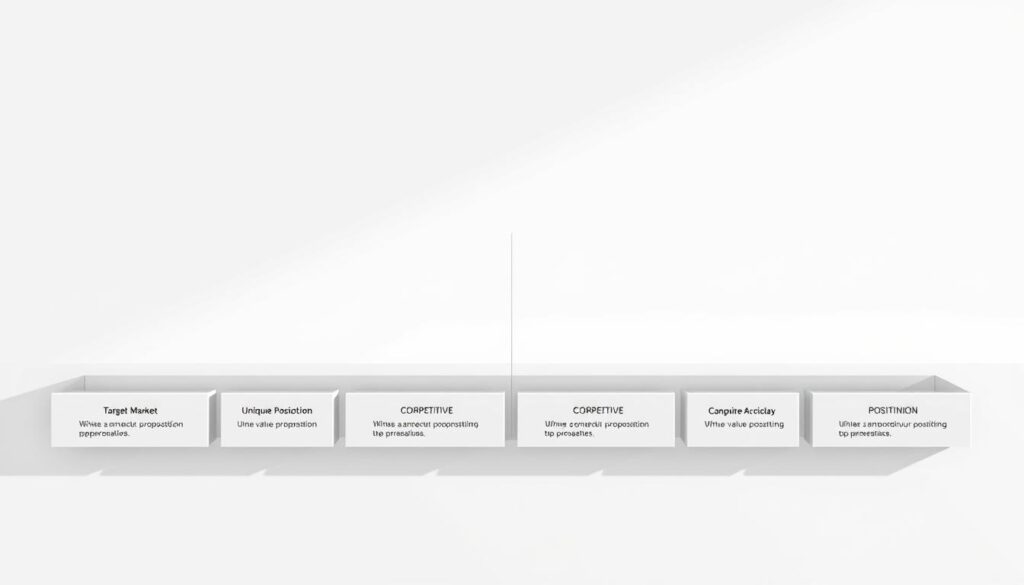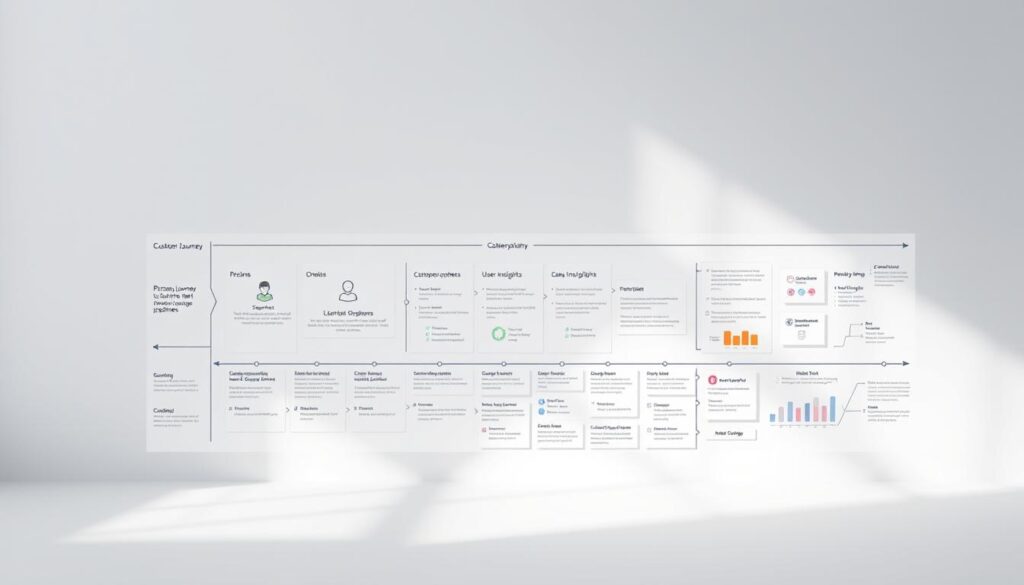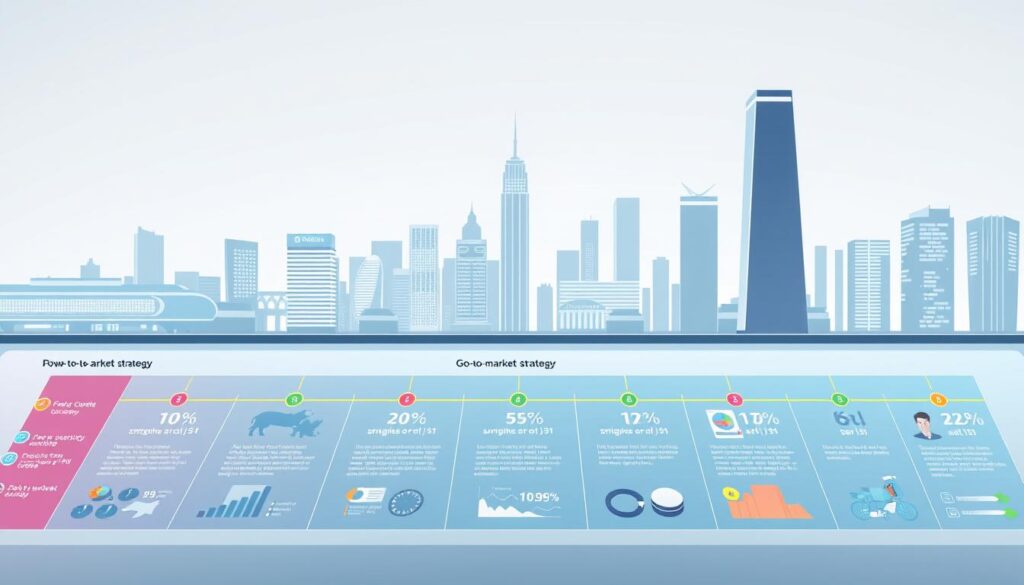Launching products successfully requires more than just a great idea. A structured approach bridges the gap between innovation and audience adoption. Take Oatly’s US expansion: instead of traditional ads, they partnered with coffee shops where dairy alternatives were in demand. This strategic alignment drove a ten-fold revenue jump in one year.
Today’s competitive landscape demands frameworks that build relationships, not just transactions. When brands prioritize meaningful interactions, they create lasting advantages even in saturated industries. Every touchpoint—from initial outreach to post-purchase support—becomes an opportunity to reinforce trust.
Data-driven insights enable hyper-relevant messaging across channels. Personalized experiences resonate deeper, turning casual buyers into loyal advocates. This approach also scales effectively, supporting repeatable processes that maintain satisfaction while driving growth.
Key Takeaways
- Sophisticated strategies prioritize audience connection as the foundation for expansion
- Relationship-focused launches outperform transactional product introductions
- Consistent engagement across all interactions builds brand loyalty
- Analytics help tailor messaging for maximum relevance
- Scalable systems ensure growth without compromising quality
Understanding the Fundamentals of Go to Market Customer Engagement
Effective product launches hinge on frameworks that transform how brands connect with audiences. Unlike traditional marketing plans focused on broad campaigns, relationship-driven strategies prioritize two-way value creation throughout the buyer’s journey.
Core Principles of Modern Outreach
Successful approaches balance consistency with adaptability. They establish clear messaging pillars while allowing personalization based on behavioral insights. For example, SaaS companies often use free trials combined with tailored onboarding—a method that increased conversions by 37% for one CRM platform.
Three critical distinctions define contemporary methods:
| Transactional Approach | Relationship-Focused Strategy |
|---|---|
| Single-point sales targets | Lifetime value optimization |
| Generic messaging | Contextual personalization |
| Campaign-based efforts | Continuous engagement loops |
The Economics of Meaningful Connections
Acquisition costs have risen 60% in five years across competitive sectors. Brands now compete on experience quality as much as product features. A study by Gartner reveals companies excelling in personalized interactions achieve 2.3x higher retention rates.
Behavioral analytics enable teams to identify high-intent signals early. This allows strategic resource allocation—focusing efforts where they generate maximum impact. When executed well, these systems become self-reinforcing: satisfied clients naturally advocate for the brand, reducing reliance on paid acquisition.
Establishing a Strong Market Strategy and Product Positioning
The cornerstone of impactful market entry lies in solving specific problems better than alternatives. Products that gain traction don’t just fill gaps—they create measurable improvements users can’t ignore. This requires aligning capabilities with unmet needs through rigorous analysis.

Identifying Your Unique Value Proposition
Successful differentiation starts with three critical comparisons:
| Traditional Focus | Strategic Differentiation |
|---|---|
| Feature listing | Outcome emphasis |
| Broad appeal | Niche prioritization |
| Static messaging | Adaptive storytelling |
Leading brands map their strengths against industry white spaces. A productivity software company might discover decision-makers care more about time recovery than feature counts. This insight shifts positioning from technical specs to hours saved weekly.
Continuous refinement separates lasting strategies from temporary wins. Teams should validate assumptions through:
- Quarterly competitive audits
- Usage pattern analysis
- Pricing sensitivity tests
When messaging consistently highlights tangible results—like “30% faster onboarding”—it resonates across departments. Finance leaders see cost savings, while operational teams gain efficiency benchmarks.
Identifying Customer Pain Points and Market Opportunities
Market leaders don’t just solve problems—they discover ones users didn’t notice. This requires systematic analysis of both visible frustrations and unspoken challenges that shape buying decisions. Teams that master this balance unlock untapped potential others overlook.
Conducting Competitive Analysis
Thorough competitor evaluation examines alternative solutions beyond direct rivals. For example, project management tools compete not just with similar platforms but also spreadsheets and manual tracking systems. A 2023 HubSpot study found 42% of businesses use makeshift methods instead of specialized software.
Effective analysis compares three dimensions:
- Feature parity with industry standards
- Pricing flexibility across user tiers
- Onboarding support quality
This approach reveals gaps where existing solutions frustrate users. Payment platforms often miss industry-specific compliance needs—a pain point smart fintechs exploit.
Exploring Customer Needs
Surface-level requests rarely tell the full story. Decision-makers frequently prioritize workflow efficiency over flashy features. A CRM provider discovered clients valued automated data entry 68% more than AI predictions during trials.
Teams validate needs through:
- Longitudinal usage pattern tracking
- Cross-departmental feedback sessions
- Pilot program behavior metrics
These methods expose hidden priorities like integration ease with legacy systems. When solutions address both stated and silent needs, adoption rates climb 53% faster according to Gartner research.
Mapping the Customer Journey to Drive Engagement
Successful brand interactions stem from visualizing every step audiences take before purchasing. This process uncovers hidden obstacles while revealing opportunities to strengthen connections. Teams that master journey mapping often see 48% faster conversion rates compared to competitors relying on generic campaigns.

Top of Funnel Strategies
Early-stage engagement focuses on delivering value without direct sales pitches. Educational blog posts and industry reports answer common questions, positioning brands as trusted advisors. A 2024 Content Marketing Institute study shows companies using problem-solving content generate 3x more leads than those pushing product specs.
| Content Type | Audience Intent | Desired Outcome |
|---|---|---|
| How-to guides | Problem awareness | Brand recognition |
| Webinars | Solution exploration | Lead capture |
| Checklists | Process improvement | Social sharing |
Bottom of Funnel Conversions
Final-stage tactics address lingering doubts through concrete evidence. Case studies showcasing measurable results outperform feature lists by 62% in closing deals. Live demonstrations and personalized ROI calculators help decision-makers justify purchases internally.
Three critical components for late-stage success:
- Streamlined contract processes with e-signature options
- Implementation timelines matching organizational calendars
- Risk-reversal guarantees like free onboarding support
Effective customer journey mapping requires continuous refinement. Teams should analyze drop-off points quarterly, adjusting content and touchpoints to maintain momentum. When sales and marketing align messaging across all stages, conversion rates improve by 34% according to recent Salesforce data.
Choosing the Right Messaging and Tailoring Your Value Proposition
Crafting messages that resonate requires moving beyond surface-level demographics. Effective communication stems from a nuanced understanding of how different audience segments think, work, and make decisions. This precision transforms generic pitches into compelling narratives that drive action.
Developing Targeted Buyer Personas
Strategic messaging begins with detailed profiles combining quantitative data and behavioral insights. A cybersecurity firm discovered IT directors prioritize compliance automation 42% more than threat detection speeds during persona development. These findings reshaped their entire content strategy.
| Traditional Profile | Strategic Persona |
|---|---|
| Job title & industry | Decision-making authority |
| Basic needs | Unexpressed frustrations |
| Preferred channels | Content consumption patterns |
The most impactful frameworks use a value matrix linking specific pain points to tailored solutions. For example:
• Healthcare administrators: Focus messaging on regulatory alignment
• Retail managers: Highlight inventory optimization proofs
Teams maintaining message consistency across departments see 29% faster deal cycles. Regular audits ensure sales collateral, support docs, and marketing materials speak the same strategic language while addressing persona-specific priorities.
Selecting Effective Marketing Channels for Your GTM Strategy
Strategic channel selection transforms outreach from scattered efforts to precision targeting. Success depends on matching distribution methods to audience behavior patterns and journey stages. Brands that analyze where decision-makers consume information see 58% higher conversion rates than those using generic approaches.
Inbound vs. Outbound Approaches
Modern strategies balance two complementary methods:
| Inbound Marketing | Outbound Outreach |
|---|---|
| Attracts researchers with guides/webinars | Targets cold prospects via ads/email |
| Builds authority over 6-9 months | Generates leads in 30-60 days |
| Measures organic traffic growth | Tracks cost per acquisition |
Educational content works best for audiences comparing solutions. A cybersecurity firm increased demo requests by 41% after shifting from cold calls to technical whitepapers.
Channel Alignment with Customer Preferences
Platform choices must reflect real user habits. Teams that deeply understand their audience (as explored in this CRM guide) outperform competitors by 33% in engagement metrics. Consider this alignment framework:
| Journey Stage | Effective Channels | Content Format |
|---|---|---|
| Awareness | SEO blogs, podcasts | Industry reports |
| Consideration | Webinars, case studies | Comparison guides |
| Decision | Demos, free trials | ROI calculators |
Continuous testing refines channel performance. One SaaS company improved lead quality by 27% after reallocating budget from LinkedIn to YouTube based on user analytics.
Designing a Sales Plan Aligned with Your GTM Objectives
Strategic sales execution demands more than aggressive targets—it requires methodical alignment between revenue goals and buyer expectations. Companies that match their approach to audience needs see 43% faster deal closures than those using one-size-fits-all tactics.
Exploring Self-Service and Inside Sales Models
Modern sales plans thrive on intentional design. Consider these two frameworks:
| Self-Service Model | Inside Sales Approach |
|---|---|
| Ideal for products under $5k | Targets mid-market ($5k-$50k) |
| Requires intuitive UX/UI | Relies on skilled sales teams |
| 24/7 automated support | Personalized demos |
Self-service works best for straightforward purchases. A project management tool increased conversions by 29% after simplifying its checkout process. Inside sales shines when deals need customization—one cybersecurity firm boosted annual contracts by 51% using tailored onboarding packages.
“Hybrid models often deliver the strongest results. Pair self-service options with live chat support to cover diverse buyer preferences.”
Effective teams balance automation with human expertise. They track metrics like:
- Average resolution time for self-help resources
- Lead-to-opportunity ratios for inside reps
- Cross-sell rates per account
Regular audits ensure strategies adapt to shifting behaviors. Quarterly reviews of channel performance help reallocate budgets toward high-impact activities.
Setting Clear, Measurable Goals for Market Success
Defining precise objectives separates thriving businesses from those stuck in reactive mode. Companies using structured frameworks achieve 73% higher success rates in reaching expansion targets compared to organizations relying on vague aspirations.
The SMART Advantage in Action
Specific, measurable goals transform abstract ambitions into executable plans. A CRM platform reduced churn by 15% within six months by setting clear parameters: “Improve onboarding completion rates from 68% to 85% through redesigned email sequences by Q3.”
Effective implementation requires aligning five elements:
- Time-bound checkpoints for progress reviews
- Resource allocation matching complexity levels
- Cross-departmental accountability structures
Metrics That Drive Decisions
Leading organizations track three interconnected metrics:
| Operational | Financial | Relationship |
|---|---|---|
| Activation rates | CAC ratios | NPS scores |
| Support resolution times | ARR growth | Referral percentages |
These indicators create feedback loops for continuous refinement. Teams analyzing weekly performance dashboards adapt strategies 42% faster than those reviewing monthly reports. The key lies in balancing immediate wins with sustainable growth patterns.
FAQ
How does product positioning impact revenue growth?
Clear product positioning directly influences buyer decisions by highlighting competitive advantages. Companies like Salesforce use precise positioning to dominate CRM markets through targeted messaging that addresses specific pain points like workflow automation.
What metrics matter most for tracking engagement success?
Key performance indicators include conversion rates, customer lifetime value, and expansion revenue. HubSpot’s analytics dashboard demonstrates how tracking lead-to-customer ratios helps optimize content strategies across funnel stages.
Why do 68% of strategies fail without proper buyer personas?
Generic messaging misses nuanced needs. Detailed personas like Adobe’s “Creative Pro” profile enable tailored campaigns that increase email open rates by 42% and demo requests by 31% through personalized content alignment.
When should businesses pivot their channel strategy?
Shift approaches when engagement rates drop below industry benchmarks or audience behavior changes. Slack’s transition from broad social ads to targeted LinkedIn outreach boosted qualified leads by 27% within two quarters.
How do cross-functional teams accelerate market entry?
Aligned sales-marketing operations reduce friction. Dropbox’s referral program success stemmed from joint efforts in incentivizing user sharing while tracking viral coefficient metrics in real time.
What separates effective SMART goals from vanity metrics?
Actionable objectives like “Increase trial-to-paid conversion by 15% in Q3” outperform vague targets. Zoom’s focus on daily active users versus total signups helped prioritize feature enhancements that reduced churn by 22%.



